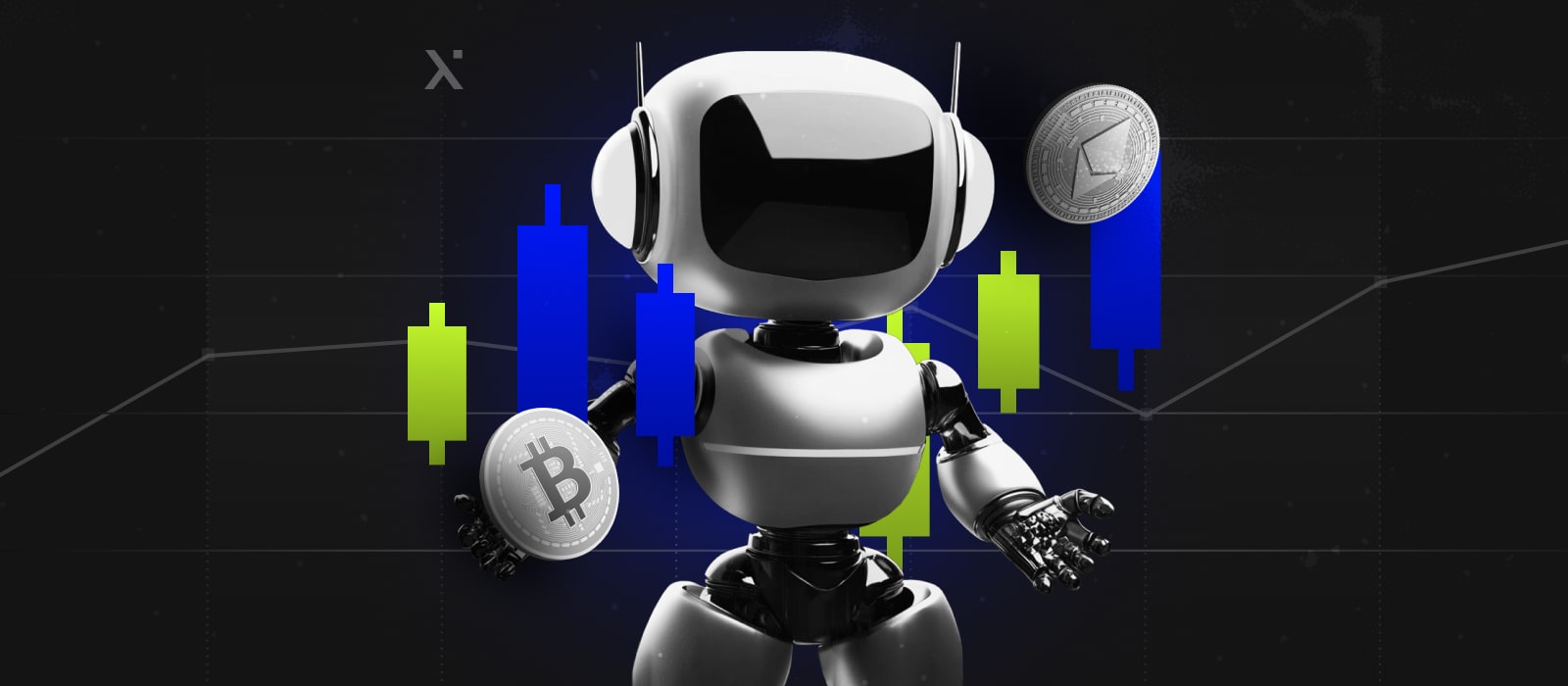Crypto arbitrage bots are versatile tools that help users monitor prices across exchanges, execute arbitrage trades, and handle a range of other tasks. Developing these tools, however, is not easy. But with the right guidance, it is more than possible.
AI in crypto and arbitrage trading has been a great way to profit from price differences across exchanges. But the process is tricky as it requires constant monitoring, quick reactions, and a lot of effort in order to pull off successfully.
Crypto arbitrage bots, on the other hand, can do all of this automatically. They can keep running circular arbitrage trades without stopping, which is why so many businesses are keen to create their own solutions and stay ahead of the game.
In this guide, we will walk you through practical tips for developing a crypto arbitrage bot based on our experience with real projects from our portfolio.
Using insights from the multi-user cross-border arbitrage bot as well as the arbitrage bot for one end-user, we will show you which features to include and the steps you need to take to make your project a success.
Let’s start!
What are the 6 key benefits of crypto arbitrage bots?
![]()
The benefits of crypto arbitrage bots are manifold. Let’s take a look at the most outstanding advantages.
1. Automated efficiency
Crypto arbitrage bots take over the heavy lifting and automate the entire process of tracking prices, identifying gaps, and executing trades.
They operate around the clock, which means you do not have to be glued to your screen all the time. While you focus on your own tasks, the bot keeps working and monitoring that no profitable opportunity slips through the cracks.
2. Faster decision-making
In arbitrage trading, speed is everything. A delay of even a few seconds can mean losing a potential profit.
Crypto arbitrage bots, though, are able to analyze massive amounts of data and execute trades within milliseconds, which is much faster than any human ever could.
Such a lightning-fast reaction time gives you a competitive edge and allows you to capitalize on fleeting opportunities before the market shifts.
3. Reduced emotional bias
Let’s face it: emotions can cloud judgment and as a result, fear of loss or overconfidence can lead to poor trading decisions.
Bots, on the other hand, don’t panic and/or experience any other emotions. They just strictly follow pre-set strategies and make sure that trades are logically and consistently executed.
4. Multi-exchange scalability
As markets move fast, tracking price differences across multiple exchanges manually is next to impossible. But crypto arbitrage bots thrive in this environment and can monitor and trade on various platforms at once (for example, integrated with mining pools).
5. Improved accuracy
Mistakes are inevitable, especially when dealing with complex calculations or the fast pace of trading.
Crypto arbitrage bots minimize this risk by relying on precise algorithms and real-time data. They execute trades with unmatched accuracy, even in the most volatile market conditions, and automatically follow taxation policies.
6. Time and resource savings
Crypto arbitrage bots are real time-savers. By automating repetitive tasks, they free you up to focus on what really matters: refining your strategies, scaling your operations, or even taking a break 🙂
Not only crypto arbitrage bots: check out how our blockchain developers engineered this eco-friendly platform for Bitcoin pool mining ->
What are the main features and components of a crypto arbitrage bot?
Each arbitrage bot solution is unique and comes with its own challenges and requirements.
But based on our experience delivering two successful crypto arbitrage bots, our experts have identified a set of universal features that every high-performing bot should have. These components form the foundation of a reliable, efficient, and scalable crypto arbitrage tool.
Now, let’s check them out.
1. Real-time price monitoring
Crypto arbitrage bots should include real-time price monitoring capabilities. These are essential to stay on top of constant market fluctuations, fetch live price data, instantly process it, and detect profitable gaps across platforms.
In both of our crypto arbitrage bot projects, we implemented robust monitoring systems to enable users to trade without restrictions on the number of transactions per day.
Thanks to the sophisticated algorithms at their core, these bots identify arbitrage opportunities in a split second and execute trades at lightning speed. Users can simply sit back, relax, and watch their profits grow with just a few taps.
2. Automated trade execution
Automated trade execution is a cornerstone of any arbitrage bot. Thanks to this component, a bot can instantly capitalize on opportunities by simultaneously triggering buy and sell orders across exchanges when pre-defined criteria are met.
Mind that developing this functionality demands careful planning and precision — since it is not just about speed but also about ensuring accuracy and reliability to minimize errors in live trading scenarios.
3. Risk management
Based on our experience with two crypto arbitrage bots, we concluded that advanced risk controls are a must.
Our blockchain consultants recommend implementing dynamic stop-loss settings, configurable trade limits, and filters based on market volatility. These features are essential because, for instance, when market conditions become unpredictable, the bot can pause trading to protect your capital.
Besides, some extra risk management features like position sizing and diversification can also help reduce exposure and spread risk.
4. Customizable arbitrage strategies
Your bot should offer customizable strategies to stay flexible in varying market conditions.
Features such as modular strategy support enable users to implement approaches like triangular, spatial, or latency-based arbitrage. With adjustable parameters and easily tweakable thresholds, users can experiment with new strategies, all while preserving the bot’s core functionality.
5. Simple and intuitive user interface
When developing crypto arbitrage bots for our clients, our UX/UI designers prioritized simplicity and user-friendliness so as to guarantee that even non-technical users can easily operate with those solutions.
In addition, a feature-rich dashboard with real-time monitoring, drag-and-drop strategy customization, and clear visualizations makes it easy for users to track performance and make data-driven decisions.
6. Multi-exchange support
To unlock the full potential of arbitrage, bots should support integration with multiple exchanges, both centralized and decentralized.
For example, one of our solutions was integrated with several popular platforms like Kraken, Binance, Bittrex, Bitfinex, and Coinbase. The broad compatibility has empowered the user of this bot to execute trades across various markets and maximize their opportunities for profit.
7. Regulatory aspects
Operating a crypto arbitrage bot responsibly requires strict adherence to legal standards.
Thus, arbitrage bots should include compliance features like KYC/AML support, detailed trade logs for audits, and customizable settings to align with global regulatory requirements.
8. Data analytics and reporting
A well-rounded crypto arbitrage bot should also include advanced reporting tools to track performance metrics like ROI, average trade execution time, and risk exposure.
Plus, incorporating features like real-time visualizations, predictive analytics solutions, and machine learning developments can provide deeper insights and help refine trading strategies.
9. Profitable rates search algorithm
In both of our crypto arbitrage bots, we incorporated advanced algorithms to quickly identify profitable rates.
These algorithms scan multiple exchanges for the best arbitrage opportunities, factoring in essential elements such as fees, slippage, and network delays.
Including this feature in a bot is highly recommended as it provides users with a notable edge in their trading activities.
10. Security features
Our crypto arbitrage bot developers suggest incorporating robust security measures like encrypted API keys, two-factor authentication, and secure server environments to protect user data and funds.
On top of this, the bot should actively monitor for suspicious activity such as unauthorized logins or irregular trading patterns to provide a high level of security and minimize the risk of breaches.
Take a look at how we created this multi-currency mobile crypto wallet with smart contract builder and advanced security features ->
How to develop a crypto arbitrage bot in 7 steps
![]()
At PixelPlex, we believe every crypto arbitrage bot development project is one-of-a-kind and calls for a personalized approach.
While our guide below outlines the seven key steps to building a successful crypto arbitrage bot, we understand that your specific goals and requirements may shape the process differently.
Some steps might be more critical than others, and depending on your vision, you might need to adjust, add, or even skip certain stages.
So, think of these seven steps as a solid starting point that can adapt as your project evolves.
Now, let’s jump in and explore what it takes to bring your crypto arbitrage bot to life.
1. Define the purpose and scope of the bot
Before starting development, it is important to have a clear vision of what you want the bot to accomplish.
Will it focus on straightforward spatial arbitrage between two exchanges or will it take on more advanced strategies like triangular or latency-based arbitrage?
Once you have outlined your goals, you will have a solid foundation needed to guide the rest of the development process.
2. Research the market and exchanges
Arbitrage opportunities heavily rely on the dynamics of the exchanges involved, making it essential to thoroughly understand them.
Therefore, take the time to analyze trading fees, API reliability, withdrawal limits, and liquidity for each exchange you plan to integrate.
If this feels overwhelming, consider seeking assistance from research and development services experts. They can handle the heavy lifting and deliver reliable and actionable insights.
3. Identify and prioritize the core features
Outline the essential features your bot needs such as real-time price tracking, automated trade execution, risk management, and a user-friendly dashboard. Also, think about enhancements like customizable strategies, multi-exchange support, or compliance tools.
If you need a tailored feature set, it is worth reaching out to IT consulting experts. They can analyze your technical requirements and business goals to recommend the most relevant components for your platform.
4. Design the bot’s architecture
Next, you will need to plan out the bot’s inner workings, including how it will interact with APIs, process data, and execute trades. It is essential to map out data workflows and define how the bot will handle multiple trades at once.
In addition to this, during this step, you will need to think about security measures to protect sensitive data and ensure secure operations.
5. Build and refine trading algorithms
This is the bot’s brain. Task your custom software development team with building algorithms that can identify arbitrage opportunities in real time, accounting for factors like fees, slippage, and latency.
Besides, it is crucial to experiment with different strategies to determine what works best for the specific markets you are targeting. By simulating trades, you can refine the bot’s logic and make adjustments as needed to ensure optimal accuracy and efficiency in every trade.
6. Test and stress the bot in real conditions
Testing prepares the bot for real-world scenarios. Have your QA and software testing team run it in live environments using small amounts of capital.
During the process, QA engineers will need to evaluate how it handles rapid price fluctuations, high trading volumes, and unexpected exchange downtimes as well as refine and stress-test until the bot is stable, efficient, and ready for action.
7. Launch, monitor, and continuously improve
Once your bot goes live, you will need to closely monitor its performance and keep an eye on how it adapts to market changes and gather user feedback.
Regular updates — whether it is optimizing algorithms, integrating with new exchanges, or improving the UI — will help your bot remain competitive in the ever-changing crypto world.
Closing thoughts
Building a crypto arbitrage bot might seem like a complex task but with the right approach, it is a rewarding journey.
It all starts with understanding your goals, selecting the right features, and testing your bot to guarantee that it is ready for real-world trading. Each step requires attention to detail but the results can be game-changing for your trading strategies.
At PixelPlex, we have years of experience developing custom cryptocurrency solutions. Whether you are looking to build an arbitrage bot, engage in P2P crypto exchange development, or crypto wallet development, our experts have the expertise to bring your vision to life.
Reach out to us and let’s talk about how we can help you build the next big thing in crypto.




